Did you know that potato sprouts are a common occurrence in households across the country? In fact, nearly 75% of households have experienced potato sprouting at some point. But the question remains, are potato sprouts safe to eat? Let’s delve deeper into this fascinating topic to uncover the truth behind potato sprouts and their safety.
Key Takeaways:
- Removing potato sprouts is crucial for safe consumption.
- Green potatoes, even if sprouted, should not be eaten.
- Proper storage techniques can prevent potato sprouting.
- Sprouted potatoes can be repurposed for planting new potatoes.
- Cook sprouted potatoes only if they are firm and sprout-free.
Why Do Potatoes Sprout?
Potatoes sprout due to a natural process triggered by specific conditions. When potatoes are stored in environments that hover around 68 degrees F (20 degrees C), which mimics springtime weather, they receive a signal that it’s time to start growing. As a result, sprouts emerge from the eyes of the potato.
These sprouts serve as the starting point for new potato plants. If these sprouted potatoes are planted in soil, they have the potential to grow fresh tubers, eventually yielding a new harvest of delicious potatoes.
Note: The image above showcases the sprouting process of a potato, bringing visual representation to the discussion.
How to Remove Sprouts from Potatoes
Sprouts can be easily removed from potatoes using a sharp paring knife or a vegetable peeler. By cutting around the sprout or using the scoop-shaped tip of a peeler, the sprout can be extracted. It is important to remove all sprouts before consuming the potato.
Quick Steps to Remove Sprouts from Potatoes:
- Choose a firm potato without any soft spots or discoloration.
- Hold the potato firmly and steady it on a cutting board.
- Take a sharp paring knife or a vegetable peeler.
- For sharp paring knife, cut around the sprout in a circular motion, ensuring all the sprout and any surrounding eyes are removed.
- For a vegetable peeler, use the scoop-shaped tip to gently lift and scoop out the sprout.
- Inspect the potato for any remaining eyes or sprouts, and repeat the process if necessary.
- Once all the sprouts are removed, the potato is ready to be used in your favorite recipe.
It is crucial to remove all sprouts from potatoes before consumption. This not only ensures the potato’s taste and texture but also eliminates any potential bitterness or toxicity that may arise from the sprouts.
What to Do With Sprouted Potatoes
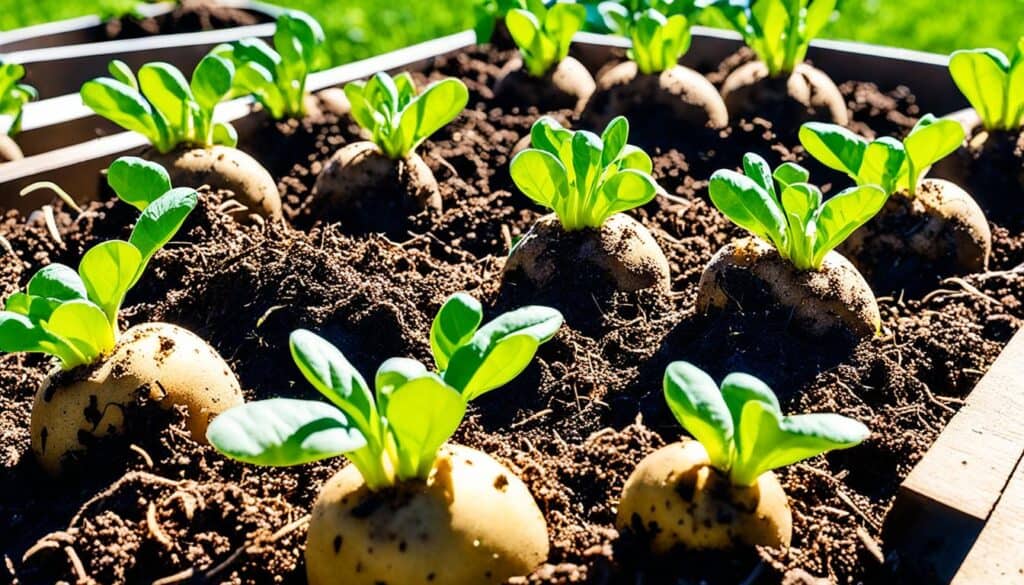
When sprouting occurs in potatoes, it can be disappointing to find those once-tasty tubers looking less than appealing. However, instead of tossing them in the trash, there are creative ways to repurpose sprouted potatoes and make the most out of them.
Planting New Potatoes
If your sprouted potatoes have too many sprouts to salvage, don’t worry! You can use them to grow brand new potatoes. By following a few simple steps, you can turn those sprouted spuds into a thriving garden crop. Here’s how:
- Cut the sprouted potato into chunks, ensuring that each piece has at least one sprout.
- Prepare your garden bed by loosening the soil and enriching it with compost or organic matter.
- Plant the potato chunks with the sprouts facing up and spaced a few inches apart.
- Cover the potato chunks with soil, leaving a slight mound on top.
- Water the newly planted potatoes regularly and keep the soil moist, but not waterlogged.
- Watch as the sprouts develop into leafy green plants and eventually yield new potatoes!
Repurposing Sprouted Potatoes
If you prefer not to plant your sprouted potatoes, there are still other creative ways to repurpose them. Consider these options:
- Homemade Potato Gnocchi: Turn those sprouted potatoes into a delicious batch of homemade gnocchi. Mash the potatoes, combine them with flour, egg, and seasoning, roll the dough into small dumplings, and cook them in boiling water until they float. Serve with your favorite sauce or toppings.
- Potato Soup: Blend the sprouted potatoes with broth, vegetables, and spices to create a comforting and flavorful potato soup. Garnish with fresh herbs and a drizzle of olive oil for added depth of flavor.
- Potato Pancakes: Grate the sprouted potatoes and mix them with grated onions, flour, egg, and seasoning to make crispy potato pancakes. Fry them until golden brown and serve with sour cream or applesauce.
- Potato Croutons: Slice the sprouted potatoes into thin rounds, toss them with oil, salt, and spices, and bake them until crispy. These potato croutons can add a delightful crunch to salads or soups.
These are just a few ideas to get you started on repurposing your sprouted potatoes. Get creative in the kitchen and experiment with different recipes to make the most out of them.
Remember, repurposing sprouted potatoes not only helps avoid food waste but also offers an opportunity to enjoy these versatile tubers in new and exciting ways.
Are Green Potatoes Safe to Eat?
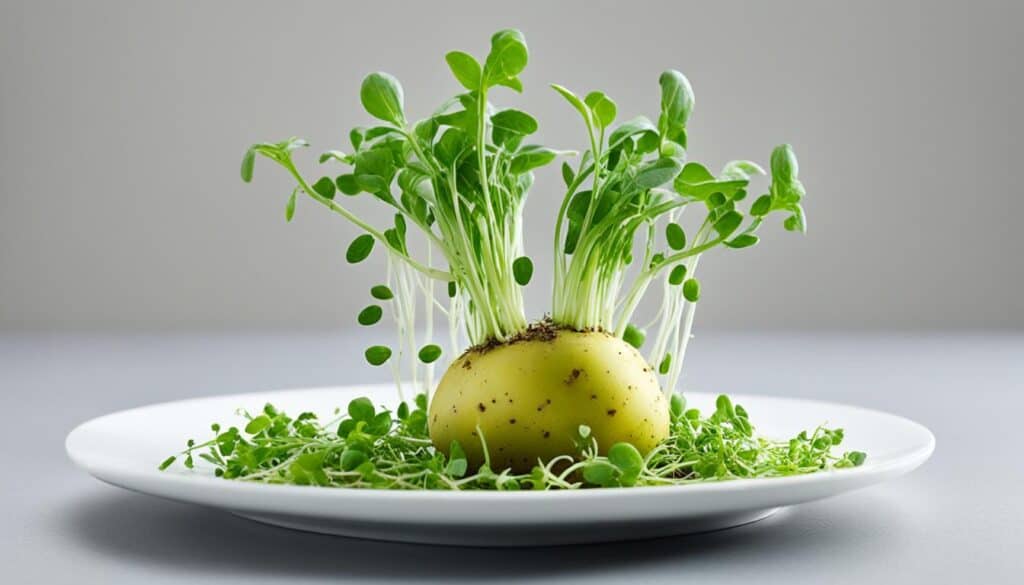
When it comes to potatoes, the vibrant green hue might catch your eye, but it’s essential to know that green potatoes are not safe to eat. Even if they have sprouted, green potatoes should be discarded due to their potential health risks.
Exposure to light triggers the production of chlorophyll in potatoes, resulting in the green coloration. Alongside chlorophyll, green potatoes also contain glycoalkaloid toxins, such as solanine and chaconine. These toxins can cause adverse effects on human health if consumed in sufficient quantities.
“Green potatoes should be discarded due to their potential health risks.”
Consuming green potatoes can lead to symptoms such as nausea, vomiting, diarrhea, stomach cramps, and even neurological effects. Although the toxin levels can vary, it’s best to err on the side of caution and avoid consuming green potatoes altogether.
To ensure your safety, always discard any potatoes that have turned green, regardless of whether they have sprouted or not. Preventing exposure to light is key in preventing potatoes from turning green. Proper storage in a cool, dark place is essential to maintain the quality and safety of your potatoes.
| Potato Conditions | Consumption Safety |
|---|---|
| Normal appearance, no green color | Safe to eat |
| Potato has sprouted, no green color | Safe to eat (after removing sprouts) |
| Potato has turned green | Not safe to eat, discard |
Remember, green potatoes should never make their way into your meals. By being mindful of their color and following proper storage practices, you can enjoy potatoes that are both delicious and safe to eat.
How to Store Potatoes
When it comes to potato storage, proper handling is key to prevent sprouting and maintain their freshness. Here are some essential tips to help you store potatoes without sprouts:
- Choose the right location: Potatoes should be stored in a cool, dry place to prevent sprouting. Ideally, find a cool basement or pantry with a stable temperature, around 45 to 50 degrees Fahrenheit.
- Optimal storage containers: To promote air circulation and prevent moisture buildup, use breathable containers like cardboard boxes or breathable bags. These containers allow proper ventilation, preventing potatoes from becoming damp and creating an environment for sprouting.
- Avoid refrigeration: Refrigerating potatoes is not recommended as the cold temperature can convert starches into sugars, causing a change in taste and texture. It can also result in browning when cooked. Keep them away from the refrigerator and instead focus on finding a cool storage area.
- Separate from onions: Potatoes and onions release gases that can hasten sprouting and spoilage. To avoid this, store them separately, preferably in different areas or containers. This simple measure can help extend the shelf life of both vegetables.
Preventing Potato Sprouts
“An ounce of prevention is worth a pound of cure.”
To prevent potato sprouts, follow these simple guidelines:
- Inspect your potatoes regularly and promptly remove any sprouts that may have formed.
- Ensure proper ventilation in the storage area to prevent moisture buildup.
- Avoid storing potatoes in direct sunlight, as exposure to light can trigger sprouting.
- Keep potatoes away from ethylene-producing fruits like bananas, as ethylene gas hastens the ripening process.
- Store potatoes separate from onions, as mentioned earlier, to prevent gas exchange between the two vegetables.
By implementing these strategies, you can maximize the shelf life of your potatoes and enjoy their freshness for longer periods.
For visual reference, here’s an example of a well-structured potato storage table:
| Potato Storage Tips | Result |
|---|---|
| Store in a cool, dry place | Prevents sprouting and maintains freshness |
| Use breathable containers | Allows proper ventilation and avoids moisture buildup |
| Avoid refrigeration | Prevents conversion of starches into sugars and browning |
| Store separately from onions | Prevents gas exchange and extends shelf life |
When Are Potatoes Not Safe to Eat?
Potatoes may be a staple in many households, but there are instances when these tubers are no longer safe for consumption. It is crucial to identify the signs of spoiled potatoes to avoid foodborne illnesses. Here are some indicators that potatoes are unsafe to eat:
- Soft or squishy texture: If a potato feels mushy or gives in easily when squeezed, it is a clear sign of spoilage. The flesh should be firm and retain its shape.
- Wrinkly appearance: Wrinkles and shriveling are visual cues that the potato has started to deteriorate. Fresh potatoes should have smooth and taut skin.
- Greenish color: Potatoes that have a greenish hue are not safe to consume. The green color indicates the presence of chlorophyll and glycoalkaloid toxins, which can be harmful to health.
- Rotten spots: Any signs of rot or decay, such as dark spots, black areas, or mold, means that the potato has gone bad and should be discarded.
- Unpleasant smell: A foul or rotten odor coming from a potato is a strong indication of spoilage. Potatoes should have a mild, earthy scent.
It is important to note that consuming unsafe potatoes can lead to foodborne illnesses, such as food poisoning. Therefore, any potatoes exhibiting these characteristics should be promptly disposed of.
If you’re unsure whether a potato is safe to eat, it’s always better to err on the side of caution and discard it. Your health should never be compromised by consuming questionable food.
| Unsafe Potatoes: Signs of Spoilage | What to Look For |
|---|---|
| Soft or squishy texture | Mushy consistency when squeezed |
| Wrinkly appearance | Shriveling and wrinkles on the skin |
| Greenish color | Green discoloration, especially under the skin |
| Rotten spots | Dark spots, black areas, or mold |
| Unpleasant smell | Foul or rotten odor |
How to Safely Cook Sprouted Potatoes
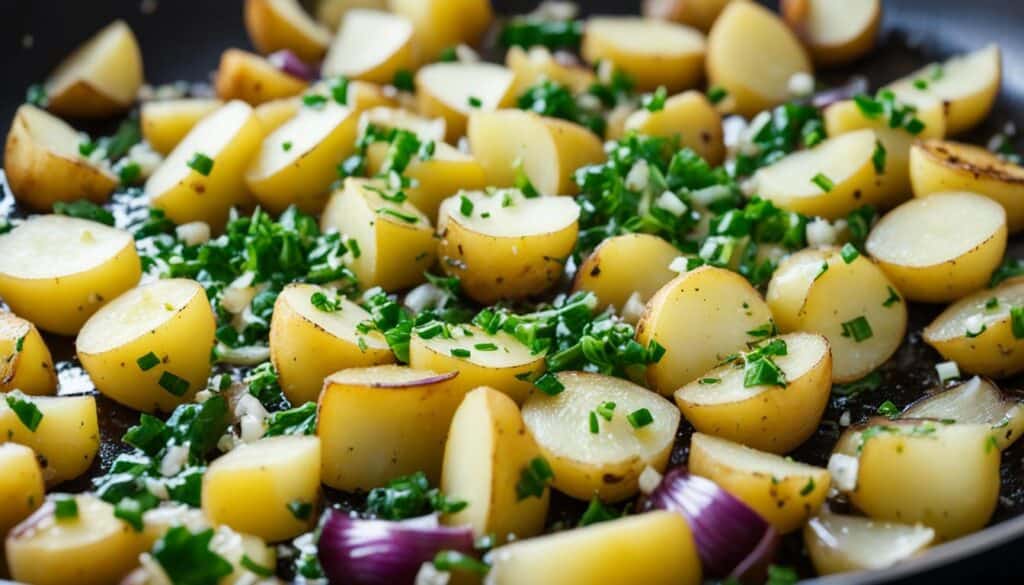
When it comes to cooking sprouted potatoes, safety is key. By following a few simple steps, you can ensure that your sprouted potatoes are prepared and cooked in a way that minimizes any potential risks. Here’s what you need to know:
1. Remove all sprouts before cooking
To begin the preparation process, it’s important to remove all sprouts from the potatoes. This can be easily done by using a sharp paring knife or a vegetable peeler. By cutting around the sprouted areas, you can effectively extract the sprouts and eliminate any potential bitterness or unpleasant texture.
2. Check for firmness and color
Before proceeding with the cooking process, make sure to check the firmness of the potatoes. They should feel firm when gently squeezed. Additionally, visually inspect the potatoes for any greenish tint. If you notice any green coloration, discard those potatoes, as they may contain harmful glycoalkaloid toxins.
3. Choose the right cooking method
Once you’ve removed the sprouts and ensured the potatoes are firm and free from greenish tint, you can choose the best cooking method for your dish. Whether you’re baking, boiling, frying, or roasting, make sure to follow the recipe instructions and cook the sprouted potatoes thoroughly. Cooking at safe internal temperatures will help eliminate any potential bacteria or pathogens.
4. Enjoy safely
After cooking, it’s important to handle and store leftovers properly. To maintain the freshness and quality of the cooked sprouted potatoes, store them in airtight containers in the refrigerator. Consume the leftovers within a few days to minimize the risk of bacterial growth.
By following these precautions and guidelines, you can safely cook sprouted potatoes and enjoy their delicious flavors without any worries.
How to Prevent Potato Sprouts
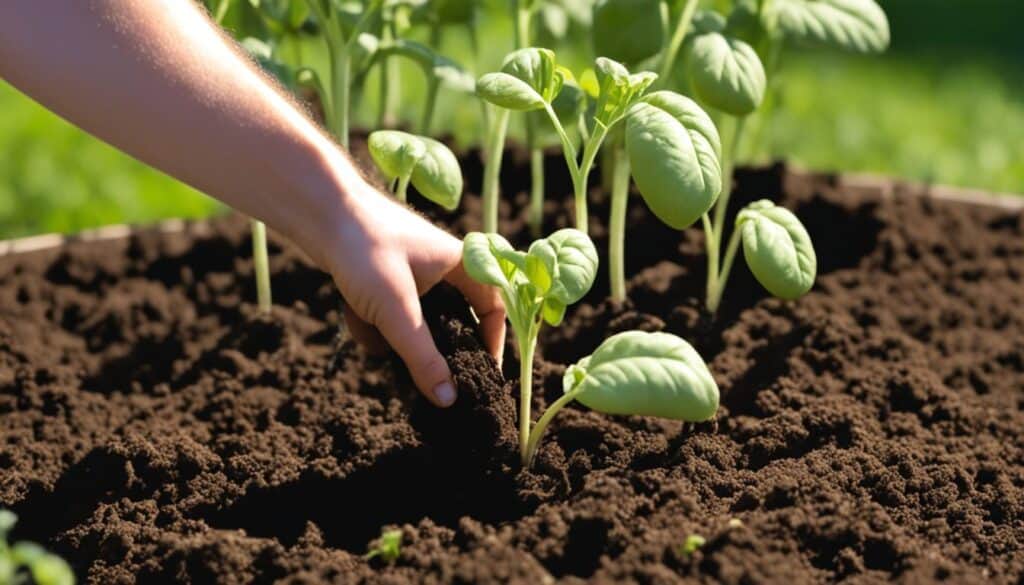
To prevent potato sprouts, I recommend following these simple tips:
- Store potatoes in a cool, dark place, such as a pantry or cellar. Avoid areas that receive direct sunlight or heat, as these conditions promote sprouting.
- Keep potatoes away from light sources, as exposure to light can trigger sprouting. Consider storing potatoes in a breathable container, like a paper bag, to limit light exposure while allowing for proper air circulation.
- Inspect potatoes regularly and promptly remove any that show signs of sprouting. By identifying and removing sprouts early on, you can prevent them from spreading to other potatoes.
Pro Tip: To further safeguard against sprouting, avoid storing potatoes near fruits that release ethylene gas, such as bananas. Ethylene gas can accelerate sprouting, so keep your potatoes separate from these fruits.
By implementing these potato sprout prevention tips, you can enjoy fresh and sprout-free potatoes for longer periods of time.
Detailed Tips for Preventing Potato Sprouts
If you want to dive deeper into preventing potato sprouts, here are some additional strategies:
- Choose the right storage temperature: Aim for a storage temperature between 45°F and 50°F (7°C to 10°C). This helps maintain the dormancy of the potatoes, minimizing the chances of sprouting.
- Avoid washing the potatoes: Keep the potatoes unwashed until you are ready to use them. Washing the potatoes can remove their natural protective layer, making them more susceptible to sprouting.
- Use proper ventilation: Ensure that the storage area has good air circulation. This helps create an environment that discourages moisture buildup and sprout development.
- Consider storing with an apple: Placing an apple in the same storage area as your potatoes can help prevent sprouting. Apples naturally release ethylene gas, which can inhibit sprout growth.
- Rotate your potato stock: When storing new batches of potatoes, make sure to use the older ones first. This rotation helps minimize the chances of sprouting as the potatoes are consumed in a timely manner.
By incorporating these additional prevention tips into your potato storage routine, you can enjoy fresh and sprout-free potatoes for longer, minimizing waste and ensuring their optimal quality.
How to Maximize Potato Shelf Life
To extend the freshness of your potatoes and maximize their shelf life, a few simple storage techniques can make a big difference. By following these guidelines, you can ensure that your potatoes stay fresh and flavorful for longer periods of time.
First and foremost, it is crucial to remove any existing sprouts from your potatoes. Sprouts can lead to quicker spoilage, so removing them helps to maintain the quality of the potatoes. Use a sharp paring knife or a vegetable peeler to carefully cut away any sprouts without removing too much of the potato flesh.
Once the sprouts are taken care of, store your potatoes in a cool and dark place. Aim for a temperature of around 50°F (10°C) for optimal storage conditions. This helps prevent the potatoes from dehydrating too quickly and losing their freshness.
Furthermore, it is important to store your potatoes unwashed. Excess moisture can cause potatoes to rot faster, so it’s best to leave the natural protective layer of dirt on the skins until you’re ready to use them. Remember to wash the potatoes thoroughly before cooking or consuming.
Here are some additional tips to keep in mind:
- Store potatoes in a well-ventilated container, such as a mesh bag or a perforated plastic bag, to maintain airflow and prevent moisture buildup.
- Avoid storing potatoes near onions, as onions release ethylene gas, which can accelerate the sprouting process.
- Inspect your potatoes regularly and remove any that show signs of spoilage, such as softness, mold, or a strong odor.
- Consume your potatoes in a timely manner to make the most of their freshness. Older potatoes are more likely to develop sprouts or spoil.
By implementing these storage practices, you can maximize the shelf life of your potatoes and enjoy their delicious flavor and nutritional benefits for a longer period of time.
Tips for Storing Potatoes
When it comes to storing potatoes, proper storage is key to prolonging their shelf life and ensuring their freshness. Follow these tips to store your potatoes properly:
- Temperature: Store potatoes in a cool, dark place at around 50°F (10°C). This temperature helps slow down the sprouting process and keeps the potatoes firm.
- Avoid sunlight: Potatoes should never be stored in direct sunlight. Exposure to light can trigger sprouting and cause the potatoes to turn green, indicating the presence of harmful toxins.
- Separate from onions and fruits: Potatoes release ethylene gas, which speeds up the ripening process of other fruits and vegetables. Hence, it is best to store potatoes away from onions and fruits like bananas.
By implementing these potato storage tips, you can maintain the quality and freshness of your potatoes for a longer period, ensuring they are always ready to be enjoyed in your favorite dishes.
Proper Potato Storage Dos and Don’ts
| Dos | Don’ts |
|---|---|
| Store potatoes in a cool, dark place. | Do not store potatoes in direct sunlight. |
| Separate potatoes from onions and fruits. | Avoid storing potatoes in the refrigerator. |
| Check potatoes regularly for sprouts or signs of spoilage. | Do not wash potatoes before storage. |
| Use breathable storage containers such as cardboard boxes or bags. | Do not store potatoes near strong-smelling foods. |
Conclusion
In conclusion, the sprouts that develop on potatoes are safe to eat as long as they are removed before consumption. While potato sprouts are natural and not harmful, it is important to ensure that they are not consumed as they are not edible. Removing the sprouts is a simple process that can be done with a sharp paring knife or a vegetable peeler.
Proper storage is also crucial in preventing potato sprouts. Potatoes should be stored in a cool, dark place to avoid exposure to light, which triggers sprouting. Storing them in a breathable container, such as a paper bag, can help extend their shelf life and maintain their freshness.
By following these guidelines, you can safely enjoy potatoes without worrying about potato sprouts. Remember to check your potatoes regularly for sprouts and remove them promptly if they appear. With proper storage and preparation, potatoes can be a delicious and nutritious addition to your meals.

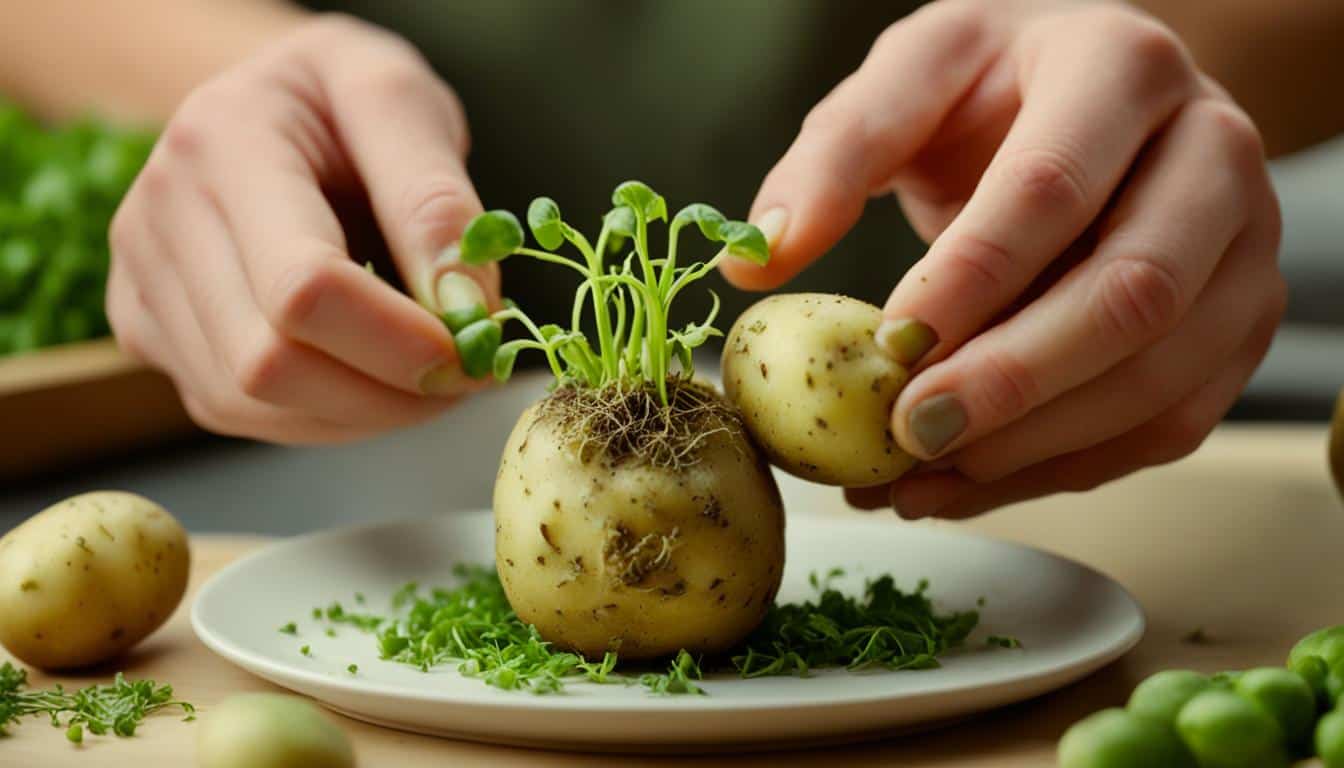
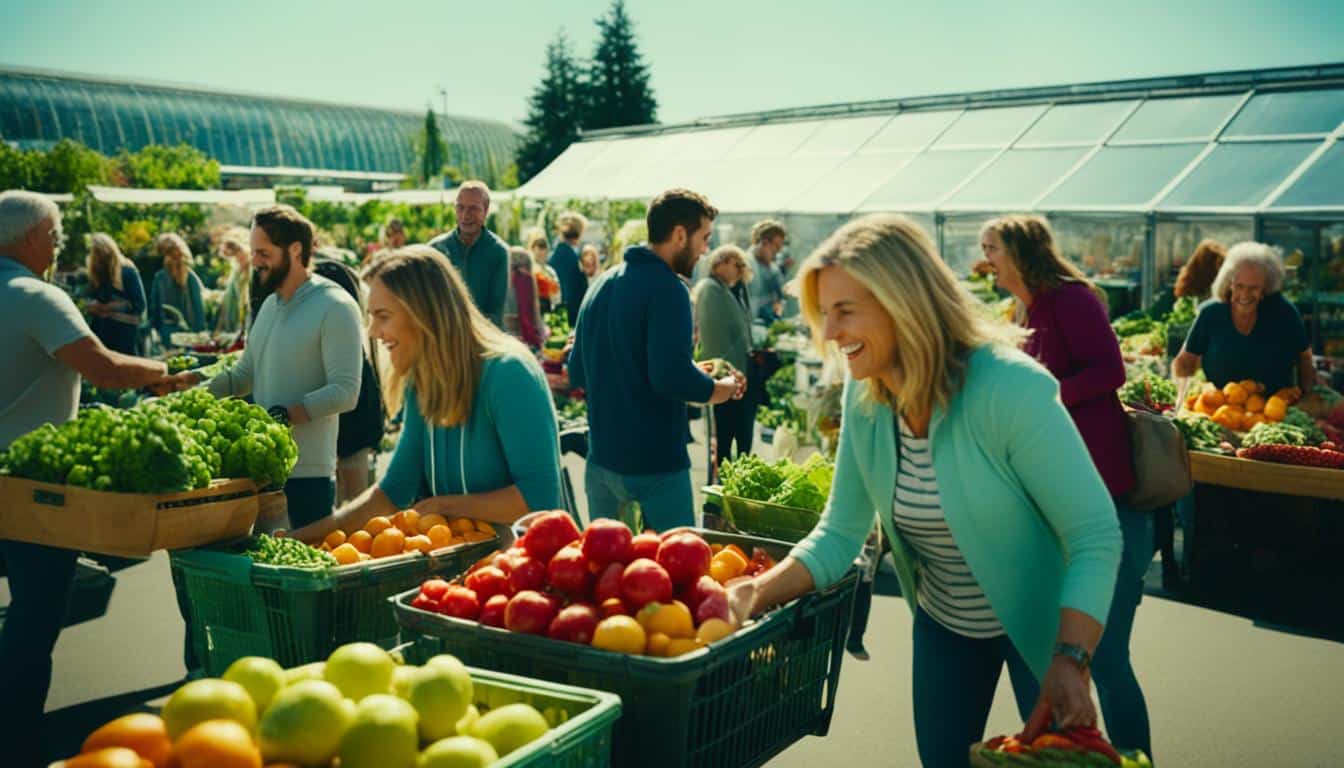
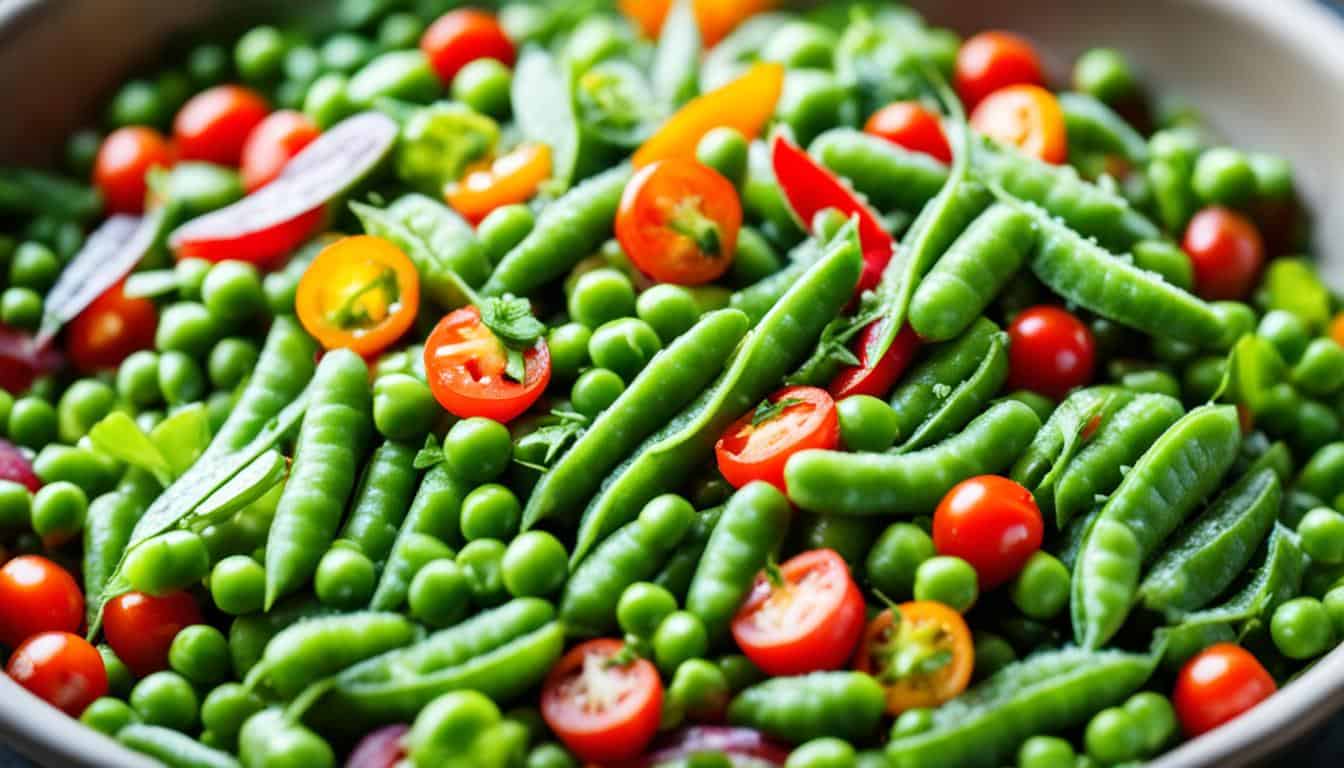
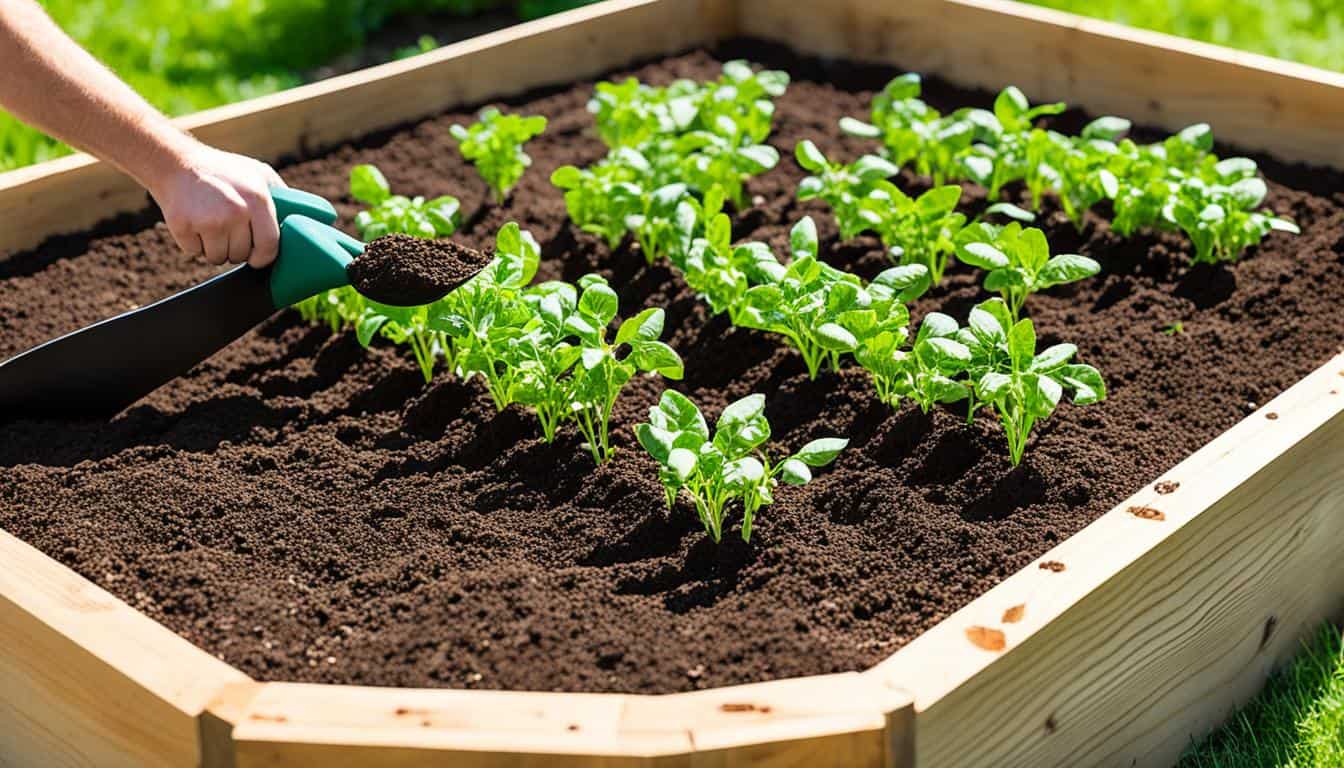
Leave a Reply